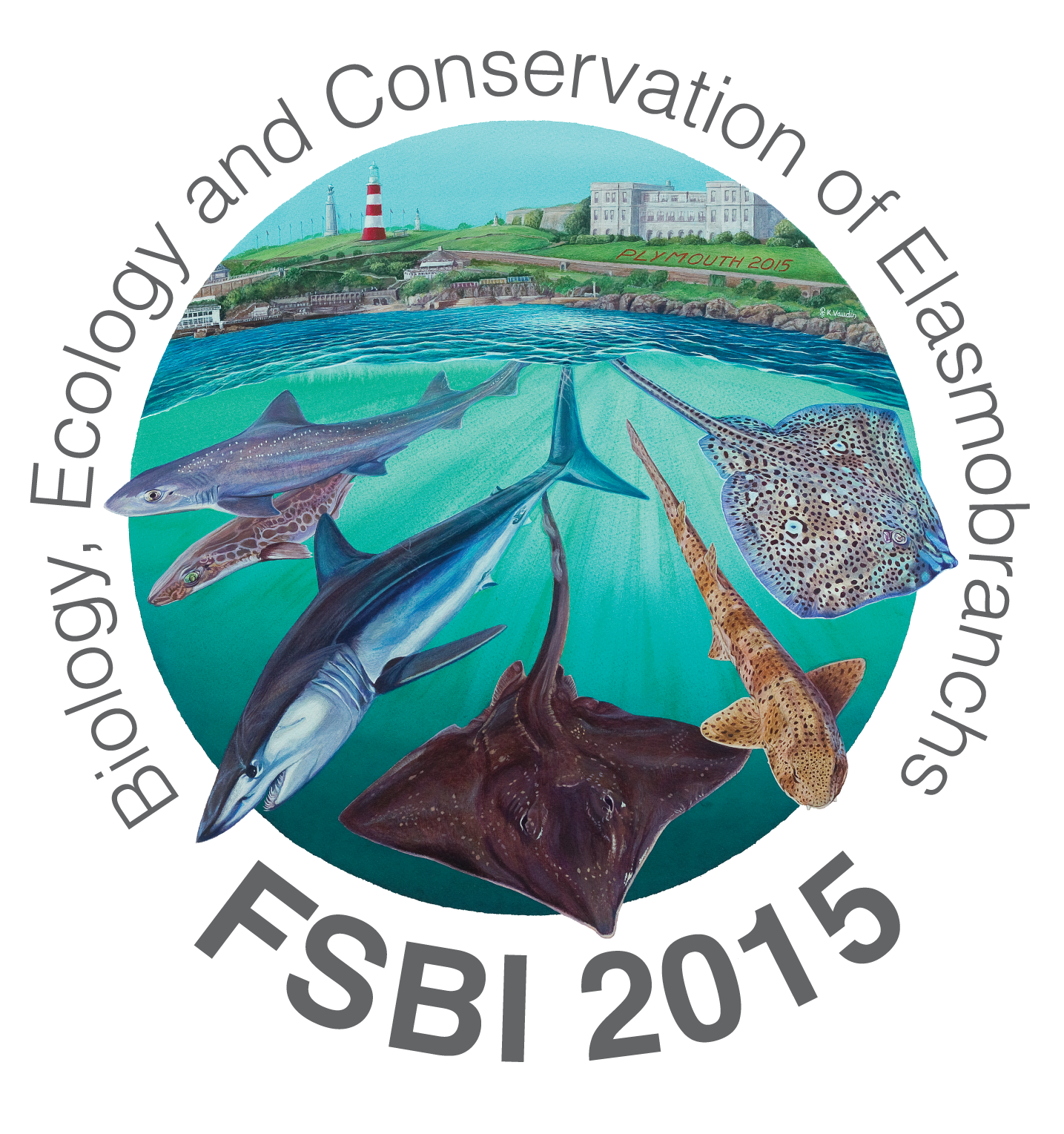Symposium 2015: Biology, Ecology and Consveration of Elasmobrachs, University of Plymouth, 3rd-7th July
The elasmobranchs (sharks, skates and rays) are cartilaginous fishes that are important predatory and scavenging species within aquatic ecosystems and as living resources to human societies globally in cultural, economic, health, biodiversity and conservation contexts. There are about 900 extant species, including the world’s largest fish, that arose sometime during c. 400 million years of independent evolution. Extant elasmobranchs possess an intriguing set of biological characteristics, including, for example, larger brains than other ectothermic vertebrates, slow growth and late age at maturity, internal fertilisation and female sperm storage, diverse reproductive modes including oviparity and viviparity, relatively low fecundity, and social systems with dominance hierarchies and segregation by sex and age.
In some respects the behavioural, ecological and life-history strategies of elasmobranchs share certain characteristics that are arguably more similar to mammals and birds than other fishes. These attributes in addition to other more unique features have also made elasmobranchs important model organisms for developmental, biomedical and evolutionary research. Furthermore, elasmobranchs occupy a very broad range of habitats worldwide and have a key role in the functioning of ecosystems. Taken together this identifies elasmobranchs as an important group to study for advancing fundamental biological knowledge in key fields ranging from molecular genetics and genomics to physiology, and from behaviour to population and community ecology. However, life-history traits such as slow growth, late maturity and low fecundity make elasmobranchs less resilient to exploitation. Many sharks, skates and rays are highly valued worldwide by commercial fisheries, leading to reported dramatic declines in the population levels of some species. There is particular concern that target and by-catch fisheries are depleting populations below sustainable levels where recovery may not be possible, or at best may be very slow, even if fishing pressure is removed. An increasing number of elasmobranchs are being listed in the IUCN Red List of threatened species, with some larger species of greater economic value now being listed on the Convention of International Trade in Endangered Species (CITES).
The conservation of elasmobranch populations in the face of pressures such as the expansion of industrialised fisheries, the degradation or removal of habitats, and for many species little or no management, require novel solutions for sustainable exploitation. To approach these and other challenges a more detailed understanding of elasmobranch biology and ecology will be the firm foundation upon which new ideas and initiatives relevant to conservation are built.
The aim of this symposium is to bring together scientists interested in the study of fundamental biological characteristics and the ecological and evolutionary relationships of elasmobranchs, including studies focusing on their population trends and conservation status. The topics covered will span levels of biological organisation from molecules and cells to systems biology, and from individuals, populations and up to communities and ecosystems. The meeting aims to highlight significant recent advances and will identify new and interdisciplinary areas likely to make a key impact in the near future for improved conservation.
THEMES
Abstracts are encouraged in any of these and related themes in the broad field of elasmobranch biology, ecology and conservation. Interdisciplinary or multidisciplinary papers are welcomed, especially where these relate to improved understanding of populations, environmental interactions and conservation initiatives.
- Genomics and molecular biology
- Developmental biology and evolutionary ecology
- Physiology and adaptations to changing environments
- Movements, behaviour and habitat use
- Population genetics, structure and distributions including phylogeography
- Ecological relationships, community and food web ecology
- Fisheries biology, ecology and management
- Conservation
- Methodological advances; e.g. biotelemetry/biologging; molecular markers
INVITED SPEAKERS
JACK JONES MEMORIAL LECTURE:
Gregor Cailliet, Moss Landing Marine Laboratories, California, USA
KEYNOTE SPEAKERS:
Julia Baum (University of Victoria, Canada)
Kevin Feldheim (The Field Museum of Natural History, Chicago, USA)
Sylvie Mazan (University of Paris and Station Biologique de Roscoff, France)
Gregory Skomal (Massachusetts Division of Marine Fisheries & Woods Hole Oceanographic Institution, USA)

Conveners
Prof David Sims Marine Biological Association Laboratory (MBA), Plymouth, UK and University of Southampton, UK
Scientific Advisory Committee
Prof David Sims MBA, UK
Dr Nick Dulvy Simon Fraser University, Canada
Dr Julian Metcalfe Cefas, Lowestoft, UK
Dr Jayson Semmens University of Tasmania, Australia
Dr Gregory Skomal Massachusetts Division of Fisheries, USA
Local Organising Committee
Prof David Sims MBA
Dr David Gibson National Marine Aquarium
Ms Ali Hood UK Shark Trust
Dr Kerry Howell University of Plymouth
Dr Nick Pade MBA
